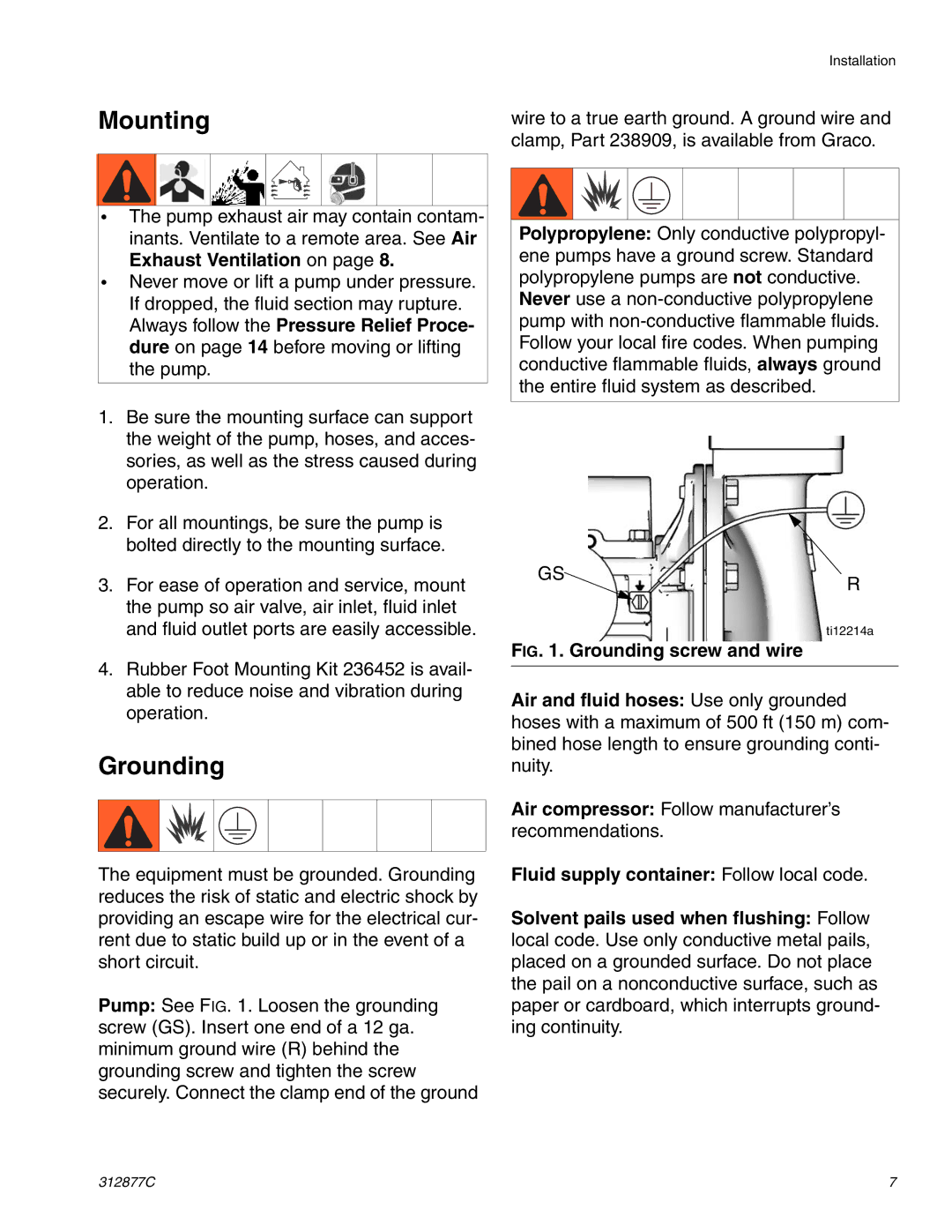
Mounting
•The pump exhaust air may contain contam- inants. Ventilate to a remote area. See Air Exhaust Ventilation on page 8.
•Never move or lift a pump under pressure. If dropped, the fluid section may rupture. Always follow the Pressure Relief Proce- dure on page 14 before moving or lifting the pump.
1.Be sure the mounting surface can support the weight of the pump, hoses, and acces- sories, as well as the stress caused during operation.
2.For all mountings, be sure the pump is bolted directly to the mounting surface.
3.For ease of operation and service, mount the pump so air valve, air inlet, fluid inlet and fluid outlet ports are easily accessible.
4.Rubber Foot Mounting Kit 236452 is avail- able to reduce noise and vibration during operation.
Grounding
Installation
wire to a true earth ground. A ground wire and clamp, Part 238909, is available from Graco.
Polypropylene: Only conductive polypropyl- ene pumps have a ground screw. Standard polypropylene pumps are not conductive. Never use a
GS
R
ti12214a
FIG. 1. Grounding screw and wire
Air and fluid hoses: Use only grounded hoses with a maximum of 500 ft (150 m) com- bined hose length to ensure grounding conti- nuity.
Air compressor: Follow manufacturer’s recommendations.
The equipment must be grounded. Grounding reduces the risk of static and electric shock by providing an escape wire for the electrical cur- rent due to static build up or in the event of a short circuit.
Pump: See FIG. 1. Loosen the grounding screw (GS). Insert one end of a 12 ga. minimum ground wire (R) behind the grounding screw and tighten the screw securely. Connect the clamp end of the ground
Fluid supply container: Follow local code.
Solvent pails used when flushing: Follow local code. Use only conductive metal pails, placed on a grounded surface. Do not place the pail on a nonconductive surface, such as paper or cardboard, which interrupts ground- ing continuity.
312877C | 7 |
